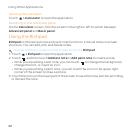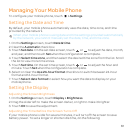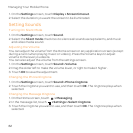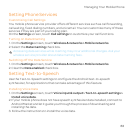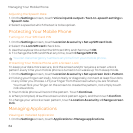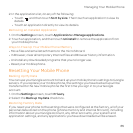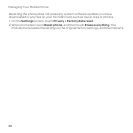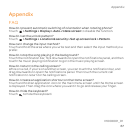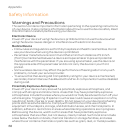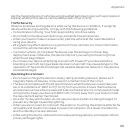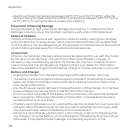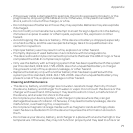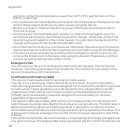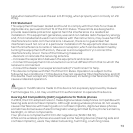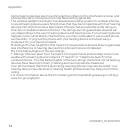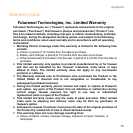
68
Appendix
Safety Information
Warnings and Precautions
This section contains important information pertaining to the operating instructions
of your device. It also contains information about how to use the device safely. Read
this information carefully before using your device.
Electronic Device
Power off your device if using the device is prohibited. Do not use the device when
using the device causes danger or interference with electronic devices.
Medical Device
• Follow rules and regulations set forth by hospitals and health care facilities. Do not
use your device when using the device is prohibited.
• Pacemaker manufacturers recommend that a minimum distance of 5.9 inch
(15cm) be maintained between a device and a pacemaker to prevent potential
interference with the pacemaker. If you are using a pacemaker, use the device on
the opposite side of the pacemaker and do not carry the device in your front
pocket.
• Some wireless devices may affect the performance of hearing aids. For any such
problems, consult your service provider.
• To ensure that the Hearing Aid Compatibility rating for your device is maintained,
secondary transmitters such as Bluetooth and Wi-Fi components must be disabled
during a call.
Potentially Explosive Atmosphere
Power off your device in any area with a potentially explosive atmosphere, and
comply with all signs and instructions. Areas that may have potentially explosive
atmospheres include the areas where you would normally be advised to turn off your
vehicle engine. Triggering of sparks in such areas could cause an explosion or a fire,
resulting in bodily injuries or even deaths. Do not power on your device at refueling
points such as service stations. Comply with restrictions on the use of radio
equipment in fuel depots, storage, and distribution areas, and chemical plants. In
addition, adhere to restrictions in areas where blasting operations are in progress.
Before using the device, watch out for areas that have potentially explosive
atmospheres that are often, but not always, clearly marked. Such locations include
areas below the deck on boats, chemical transfer or storage facilities, and areas
where the air contains chemicals or particles such as grain, dust, or metal powders.



